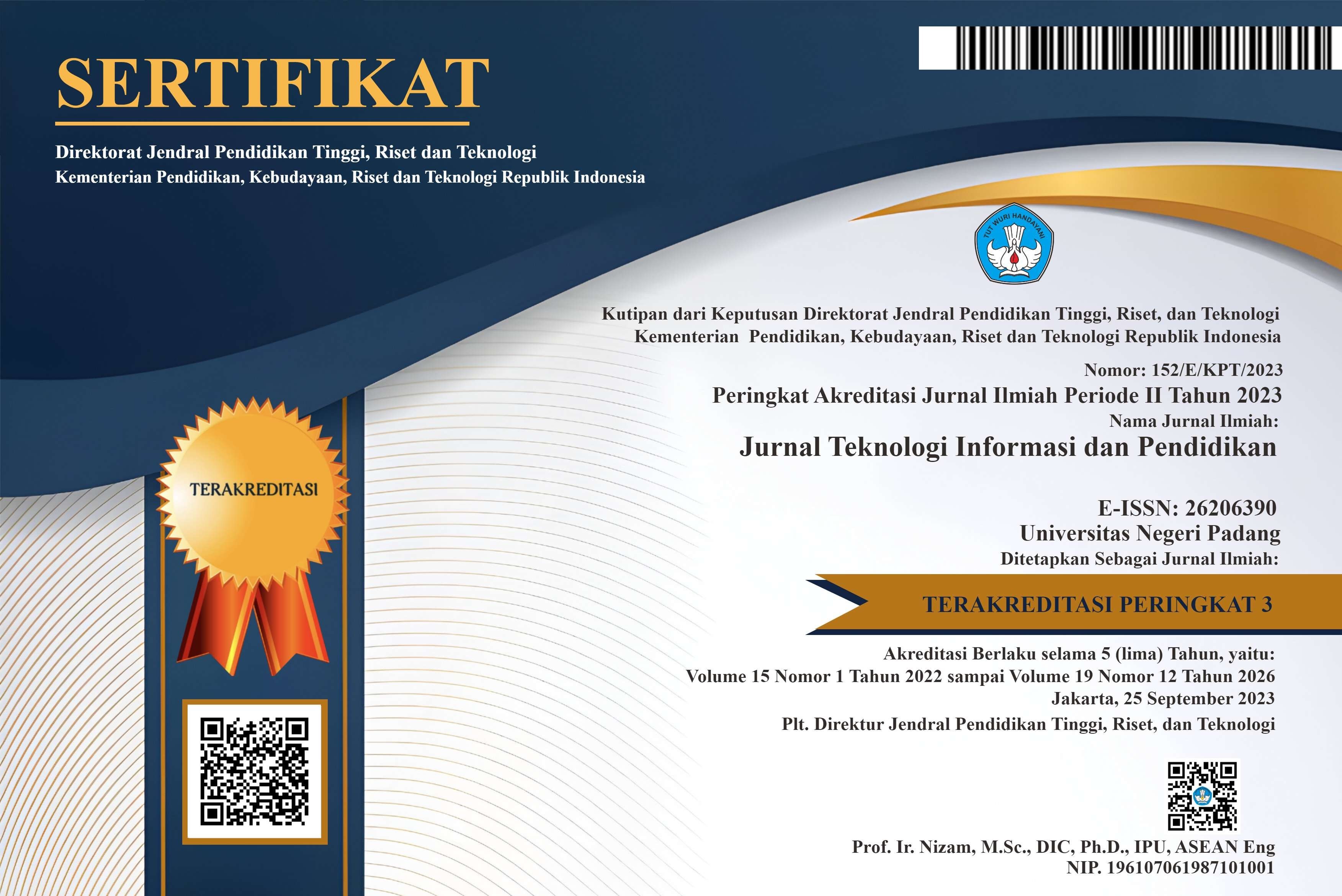Effectiveness of Online Learning viewed from Students’ Online Interaction
DOI:
https://doi.org/10.24036/jtip.v15i1.576Keywords:
Online Learning, Online InteractionAbstract
Online learning was expected to remain as effective as face-to-face learning. One of the important factors used to measure the effectiveness of learning is the online interaction of students with their peers, teachers, and learning content. Therefore, this study aims to determine the effectiveness of online learning viewed from online interactions in SMK Negeri 3 Salatiga. This was descriptive quantitative research using questionnaires distributed to 306 students as a data collection technique. The results showed that online learning in SMK Negeri 3 was effective, viewed from the online interactions, namely the student-student interaction had an average score of 3.87 (high), students-teachers interaction had an average of 4.14 (high) and students-learning content interaction had an average of 3.89 (high). It is expected that the findings will become a consideration in order to design effective online learning based on the students’ online interaction. Besides, the teachers will understand more about their students and their development in learning process.















.png)














